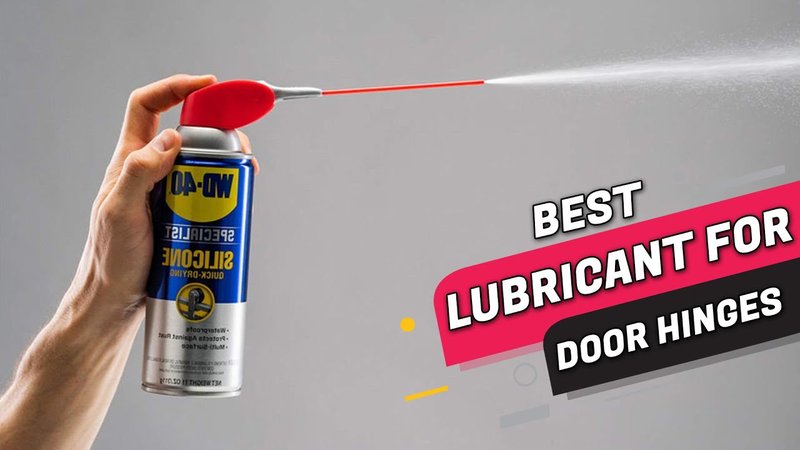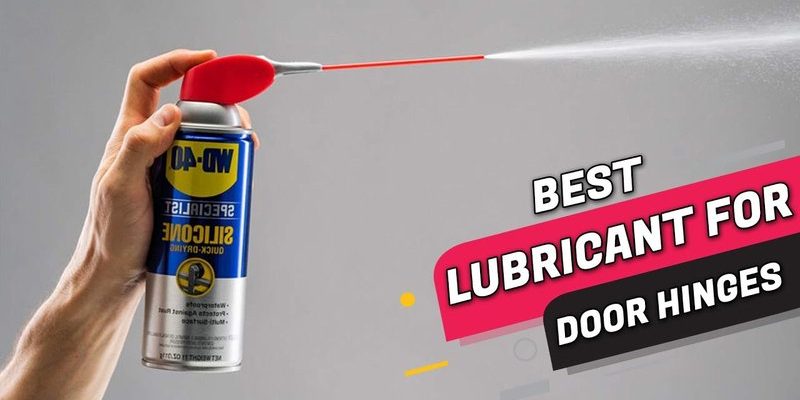
Think of your fiberglass door as a tough-but-sensitive athlete. It’s built to last, shrug off the weather, and look sharp year after year. But use an oil or solvent that reacts with its surface, and suddenly you’re dealing with clouding, warping, or a sticky mess around your lock. Instead, you need a *non-reactive* lubricant—something that makes hardware work better, without risking the sleek finish you paid for. There are a handful of options out there, including brands like 3-IN-ONE, CRC, and DuPont, but picking the right kind for your exact door and hardware setup makes all the difference.
Why Ordinary Lubricants Don’t Work For Fiberglass Doors
Here’s the thing: most household lubricants, like multipurpose oils or heavy-duty greases, are *not* the right match for fiberglass. Why? Because they contain solvents or petroleum bases that aren’t friendly to synthetic surfaces. Those ingredients can react with the fiberglass or the painted/gel-coated finish. Over time, you might notice discoloration, tacky residue, or even little hairline cracks near the hardware. That’s not what you want on an entryway that’s supposed to look sharp and keep out the weather.
Let me explain with a quick story. A friend once sprayed his fancy Schlage lockset on a fiberglass door with standard WD-40. A week later, the area around the handle looked dull and greasy, and fingerprints stubbornly stuck to it. He ended up replacing the whole lock and buffing the finish, just to undo a five-second mistake. Ordinary lubricants work for steel or brass, but on fiberglass, they can cause more trouble than they solve.
To avoid these headaches, always look for “non-reactive” or “plastic-safe” on the label. These products are tested to work with synthetic materials, including the surfaces found on most fiberglass doors. They won’t eat away at the finish or leave a filmy chalkiness behind.
What Makes a Lubricant “Non-Reactive”?
You might be wondering, what’s so special about a *non-reactive* lubricant? In plain terms, it’s all about chemistry. Non-reactive lubricants are formulated without harsh solvents or petroleum bases that can break down plastics, synthetic resins, or fiberglass. Instead, they use ingredients like silicone, PTFE (that’s Teflon), or lightweight synthetic oils that just glide on and don’t soak in.
Here’s a quick comparison:
- Reactive lubricants: Contain solvents that can dissolve, soften, or discolor plastics and fiberglass. Examples: standard WD-40, penetrating oils, lithium grease.
- Non-reactive lubricants: Designed to be neutral, with no chemical reaction on plastics or resins. Examples: silicone sprays, PTFE dry lubes, certain synthetic oils.
Non-reactive lubricants are also less likely to pick up dust or gunk, which means your hardware stays smooth and clean longer. Some, like DuPont’s Silicone Lubricant or 3-IN-ONE’s Lock Dry Lube, are even recommended by door manufacturers for this exact reason.
Tip: Always double-check the label for “safe for plastics” or “non-reactive”—especially if you have a colored or textured fiberglass finish. It’s worth the extra minute.
Top Non-Reactive Lubricants For Fiberglass Door Hardware
Shopping for the right product can feel overwhelming—there are so many cans and bottles lined up at the hardware store. Here’s a breakdown of the most reliable choices, based on real-world performance and door manufacturer guides:
- Silicone Spray Lubricants: These are the gold standard for fiberglass door hardware. Brands like CRC and DuPont make versions that spray on clear, dry fast, and don’t attract dust. They create a slick, invisible layer that keeps hinges and locks moving without gumming up over time.
- PTFE (Teflon) Dry Lubricants: PTFE, often found in products like DuPont Teflon Dry Film, forms a dry, non-stick coat. It’s ideal for areas where you really don’t want residue—like inside locks or between tight hinge pins. Plus, it’s safe on plastics and paint.
- Graphite Powder: Although less common, graphite is another non-reactive option, especially for locks. It won’t melt or drip, and it’s naturally non-reactive with fiberglass or plastic finishes. Just don’t overdo it—a little dust goes a long way.
- 3-IN-ONE Lock Dry Lube: This specialty product is designed for door hardware. It goes on wet but dries to a thin, slick film that won’t harm surrounding surfaces. It’s a favorite for keeping deadbolts and latch mechanisms working smoothly year-round.
Each of these lubricants serves a slightly different purpose, so think about where you need it—hinges, lock cylinders, or sliding parts. If in doubt, silicone spray is usually the safest, most versatile option.
How To Apply Lubricant Safely To Fiberglass Door Hardware
Honestly, application matters just as much as product choice. If you spray lubricant all over the place, it *will* end up on the door surface, which can still cause stains or slippery patches, even with non-reactive formulas. Here’s a step-by-step approach that won’t leave you cleaning up a mess:
- Protect the Door Surface: Before you start, cover the area around the hinge or lock with painter’s tape, a rag, or even a paper towel. That way, any overspray lands on protection, not your door.
- Use Targeted Nozzles: Most modern lubricants come with a straw or precision tip—use it! Aim for the moving parts only: hinge pins, the actual cylinder of the lock, or the latch bolt. Don’t flood the area.
- Work the Mechanism: Once you’ve applied the lubricant, open and close the door, or turn the lock a few times. This spreads the lubricant evenly and ensures everything gets coated.
- Wipe Away Residue: Anything that drips or puddles should be wiped up right away. This keeps the finish clean and prevents dust from sticking.
If you need to *reset* the hardware or *troubleshoot* a sticky lock, lubricate first—sometimes what feels like a broken latch is just a dry mechanism. Don’t forget to test your remote or keypad if your fiberglass door uses coded entry; non-reactive lubricants won’t interfere with electronics, but spray carefully all the same.
Common Hardware Issues That Lubricant Can Fix (Or Make Worse)
You might be dealing with more than just a squeaky hinge. Sometimes, fiberglass door hardware develops other frustrating problems: codes not syncing, remotes acting up, or keypads feeling sticky. While lubricants can solve a lot, they’re not a universal fix—especially for electronics.
- Sticky Hinges: This is where a silicone or PTFE lube shines. No more creaking, and your door swings effortlessly.
- Key Won’t Turn: Usually a sign the lock needs dry lube—skip the oil, or you’ll gum up the pins. Lock-specific sprays or graphite are best.
- Remote or Keypad Trouble: Sometimes dirt or grit near buttons can be loosened with a quick, precise spray of non-reactive lubricant. But if there’s electrical trouble (like a dead battery or sync issue), don’t use lubricant—handle the electronics separately.
- Latch Not Returning: This can come from dried residue or misaligned parts. A non-reactive lube often restores smooth movement, but don’t force anything that feels jammed; you might need a reset or even to code or pair a new lock mechanism.
Note: Always double-check hardware instructions before using any lubricant near electronic or battery-operated parts. Some remotes or smart locks are sealed and should never be sprayed.
Comparing Non-Reactive Lubricant Types For Fiberglass Door Hardware
Choosing between a silicone spray, PTFE dry lube, or graphite powder? Here’s a side-by-side look:
| Lubricant Type | Best For | Drawbacks |
| Silicone Spray | Hinges, lock internals, sliding bolts | Can feel slightly greasy if over-applied |
| PTFE Dry Lube | Precision parts, lock cylinders | May need more frequent reapplication |
| Graphite Powder | Keyed locks, tight moving parts | Messy if spilled, not ideal for hinges |
| 3-IN-ONE Lock Dry Lube | Deadbolts, latches, general hardware | Not as dry as powder, but cleaner than oil |
As a rule of thumb, I lean toward silicone spray for everyday maintenance, PTFE dry lube for precise spots, and graphite when I know I’ll be dealing with keys and not much else.
How Often Should You Lubricate Fiberglass Door Hardware?
“How often should I do this?” That’s a question I hear all the time. The honest answer: it depends on your climate, how often you use the door, and whether you’re dealing with entry hardware or interior doors.
Generally speaking:
- For main entry doors, lubricate all moving parts every 6–12 months. High humidity or salty environments mean you might want to do it more often.
- Always lubricate new hardware after installation, and reapply after cleaning or troubleshooting any issues like sticking or squeaking.
- If you notice any trouble—codes not syncing, a battery-driven remote not unlocking smoothly, or a lock that feels rough—don’t wait. Treat it right away.
Regular maintenance keeps your hardware reliable and helps prevent bigger problems that could cost you more down the line. Plus, it’s a five-minute fix that saves you the headache of replacing parts or calling in a pro.
What To Avoid When Lubricating Fiberglass Door Hardware
Some mistakes are easy to make, especially if you’re in a rush. Here are a few “don’ts” that’ll keep your fiberglass door looking and working its best:
- Skip Petroleum-Based Greases: They’re great for garage doors or old metal gates, but can react badly with fiberglass or plastic finishes.
- Avoid Over-Lubricating: Too much lubricant attracts dust or can seep into the door material, which causes more problems than a little squeak.
- Don’t Spray Electronics: If your door uses a remote control, keypad, or coded lock, keep all sprays away from electrical contacts. Stick to mechanical parts only, and handle all battery or sync/reset tasks separately.
- Don’t Ignore Spills: Wipe up any extra immediately to prevent staining or slipping hazards.
Insight: Always test the lubricant on a hidden area first, especially if you have a colored or wood-grain fiberglass door. If there’s *any* change in appearance, try a different formula.
Wrapping Up: The Best Way To Keep Fiberglass Door Hardware Running Smoothly
Keeping your fiberglass door hardware in good shape isn’t rocket science—it’s mostly about using a *non-reactive* lubricant, following a smart routine, and giving a little attention to detail. The right products—like silicone spray, PTFE dry lube, or a specialty lock formula—make all the difference. They tackle squeaks, sticking, and sluggish locks without risking the sleek finish of your door.
Remember: a little goes a long way, and the safest choice is always something labeled “plastic-safe” or “non-reactive.” Take your time, apply carefully, and you’ll enjoy smooth, trouble-free entry for years to come. And if you ever have trouble with a remote, code, or battery-powered lock, handle those electronics separately—sometimes the best troubleshooting is simply keeping things clean and well-lubricated, without overdoing it.
